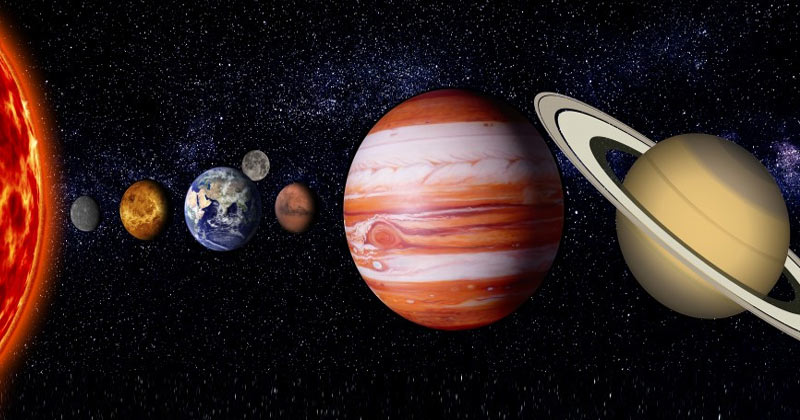Unlike the flat-earther’s claim, it is proven that the earth is spherical along with the other known planets. But why did all planets decide to be spherical shaped and not adopt any different shape? Why are all the planets round? Let’s explain.

The Question of Shape
A lot has been discussed in human history about the shape of the earth or the planets in general. Greek scholars believed that the earth should be a sphere, and they were absolutely right. However, it took a long time for her knowledge to gain acceptance.
Today it seems completely natural to us that planets are spherical. But why are they not actually disks or irregularly shaped structures that float through space? Why Are All Planets Round?
Why Are All Planets Round?
The shape of the earth has long been clear, but not the reason for this unique shape. Planets are round for the same reason for which free-floating water drops are round. The reason is gravity.
The aggregation of matter created planets. Clouds of dust and gas formed billions of years ago and developed into celestial bodies. The larger they grew, the greater attraction emerged from their center. The gravity also increased.
Starting from a certain size, all masses are drawn intensively to the center of the body, creating a spherical shape. Gravity is equally strong in all directions. The sphere is the logical form since the gravitational forces are in balance here.
Are all Celestial Bodies Round? – Why Are All Planets Round
As already described, the spherical shape results from the even attraction of the planets. The following applies: The more massive a planet is, the higher its gravity is and the rounder it becomes. Small planets, so-called planetoids, have low gravitational forces and are therefore irregularly shaped.
Gravity is also the reason why there can be no higher mountain on Earth than Mount Everest at 8,848 meters. A higher rock could not withstand the pressure of gravity corresponding to the earth. As a result, mountains and valleys become smaller with increasing mass.
Suggested Read: Why Is Earth Called a Unique Planet? Why is there no place like home? Let’s take a look

There are small planets, up to a few hundred kilometers in size, that look like a crooked potato. But when they get significantly larger, the gravity with which different parts within these bodies attract each other increases so much that even the hardest rock gives way and liquefies. It rearranges itself until complete symmetry is achieved again, and all internal forces are in balance. This condition is fulfilled with the spherical shape.
What works with stony bodies like the earth, the moon, Mars, etc. will work even better with planets in the gaseous state like Jupiter and Saturn, which are perfect spheres. For the same reason, it is also the reason that the sun, a much larger gas body, is a perfect sphere.
The larger the celestial bodies are, the smoother the spherical shape becomes. Small celestial bodies, however, have a low gravitational pull. Therefore they are not spherical in shape but are irregular structures. A good example is the asteroid Cleopatra that orbits our sun like a planet but has a diameter of only 124 kilometers.

Its gravity is, therefore, not sufficient to shape it into a ball. Instead, Cleopatra has the curious shape of a dog’s bone. Some moons of the planets of our solar system have also developed only slightly spherical because of their low gravity. For example, the moon of Mars, called Phobos, looks more like a potato.
Suggested Read: Why Is Pluto Not a Planet Anymore? What is the Definition of a Planet Now?
The earth and the other planets are not perfect spheres either. They are so-called rotational ellipsoids. Due to the centrifugal force generated by the rotation of the planets, a bulge forms at the equator. Therefore, the planets are not shaped like billiard balls but slightly flattened. The earth’s radius at the equator is about 21 kilometers larger than at the poles.
In the case of the earth, there is a secondary effect that makes its shape hunched. It is the tectonic plates. The movements of the continental plates push up mountains, such as the Himalayas. So the earth would not roll far when revolving or rotating because earth is not perfectly round but slightly flattened, with many dents and noses.


